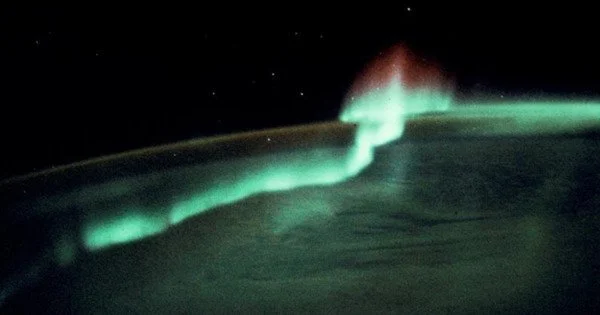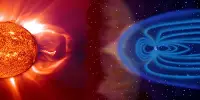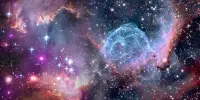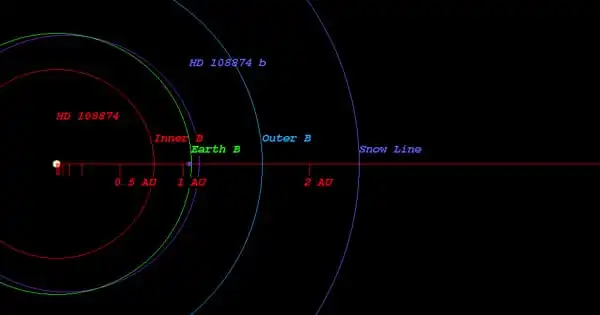Astronomers from New Jersey Institute of Technology’s Center for Solar-Terrestrial Research (NJIT-CSTR) published detailed radio observations of an extraordinary aurora-like display occurring 40,000 km above a relatively dark and cold patch on the Sun known as a sunspot in Nature Astronomy.
According to the researchers, the novel radio emission is similar to auroral radio emissions seen in planetary magnetospheres such as those around Earth, Jupiter, and Saturn, as well as certain low-mass stars.
According to the study’s lead author and NJIT-CSTR scientist, Sijie Yu, the discovery provides new insights into the origin of such intense solar radio bursts and potentially opens new avenues for understanding similar phenomena in distant stars with large starspots.
“We’ve detected a peculiar type of long-lasting polarized radio bursts emanating from a sunspot, persisting for over a week,” Yu said. “This is very different from the typical, transient solar radio bursts that last minutes or hours.” It’s an exciting discovery that could change our understanding of stellar magnetic processes.”
Our observations show that these radio bursts are not necessarily tied to the timing of solar flares. Instead, sporadic flare activity in nearby active regions seems to pump energetic electrons into large-scale magnetic field loops anchored at the sunspot, which then power the ECM radio emission above the region.
Rohit Sharma
Famous auroral light displays visible across the sky of Earth’s polar regions, such as the Aurora Borealis or Aurora Australis, occur when solar activities disturb Earth’s magnetosphere, allowing charged particles to precipitate to the Earth’s polar region where the magnetic field converges and interacts with oxygen and nitrogen atoms in the high atmosphere. When such electrons accelerate toward the north and south poles, they can produce intense radio emissions at frequencies of a few hundred kHz.
According to Yu’s team, the newly observed solar radio emissions, which were detected over a vast sunspot region where magnetic fields on the Sun’s surface are particularly strong, differ from previously known solar radio noise storms in both spectral and temporal terms.
“Our spatially, temporally and spatially resolved analysis suggests that they are due to the electron-cyclotron maser (ECM) emission, involving energetic electrons trapped within converging magnetic field geometries,” explained Yu. “The cooler and intensely magnetic areas of sunspots provide a favorable environment for the ECM emission to occur, drawing parallels with the magnetic polar caps of planets and other stars and potentially providing a local solar analog to study these phenomena.”
“However, unlike the Earth’s auroras, these sunspot aurora emissions occur at frequencies ranging from hundreds of thousands of kHz to roughly 1 million kHz — a direct result of the sunspot’s magnetic field being thousands of times stronger than Earth’s.”
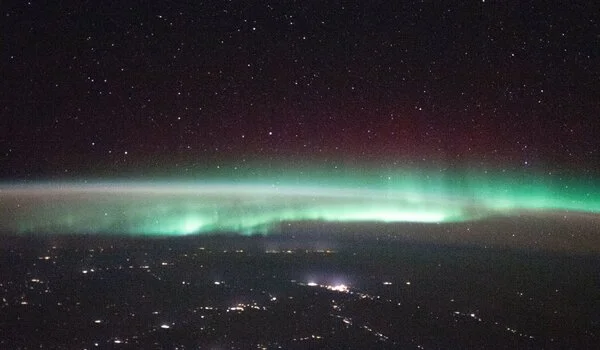
“Our observations show that these radio bursts are not necessarily tied to the timing of solar flares,” said Rohit Sharma, a co-author of the study and a scientist at the University of Applied Sciences Northwestern Switzerland (FHNW). “Instead, sporadic flare activity in nearby active regions seems to pump energetic electrons into large-scale magnetic field loops anchored at the sunspot, which then power the ECM radio emission above the region.”
The “sunspot radio aurora” is thought to rotate in sync with the solar rotation, resulting in what Yu calls a “cosmic lighthouse effect.”
“As the sunspot traverses the solar disk, it creates a rotating beam of radio light, similar to the modulated radio aurora we observe from rotating stars,” Yu said. “Because this sunspot radio aurora is the first of its kind, we will conduct a retrospective analysis.” We want to see if any of the previously recorded solar bursts are examples of this newly discovered emission.”
The solar radio emissions, albeit weaker, are analogous to stellar auroral emissions previously observed, and may imply that starspots on cooler stars, similar to sunspots, could be the sources of certain radio bursts observed in various stellar environments.
“This observation is among the clearest evidence of radio ECM emissions we have seen from the Sun. The characteristics resemble some of those observed on our planets and other distant stars, leading us to consider the possibility that this model could be potentially applicable to other stars with starspots,” said Bin Chen, NJIT-CSTR associate professor of physics and a co-author.
The team says the latest insight, linking the behavior of our Sun and the magnetic activities of other stars, could have implications for astrophysicists to rethink their current models of stellar magnetic activity.
“We’re beginning to piece together the puzzle of how energetic particles and magnetic fields interact in a system with the presence of long-lasting starspots, not just on our own Sun but also on stars far beyond our solar system,” said Surajit Mondal, a solar researcher at NJIT
“By understanding these signals from our own Sun, we can better interpret the powerful emissions from the most common star type in the universe, M-dwarfs, which may reveal fundamental connections in astrophysical phenomena,” said Dale Gary, NJIT-CSTR distinguished professor of physics.
